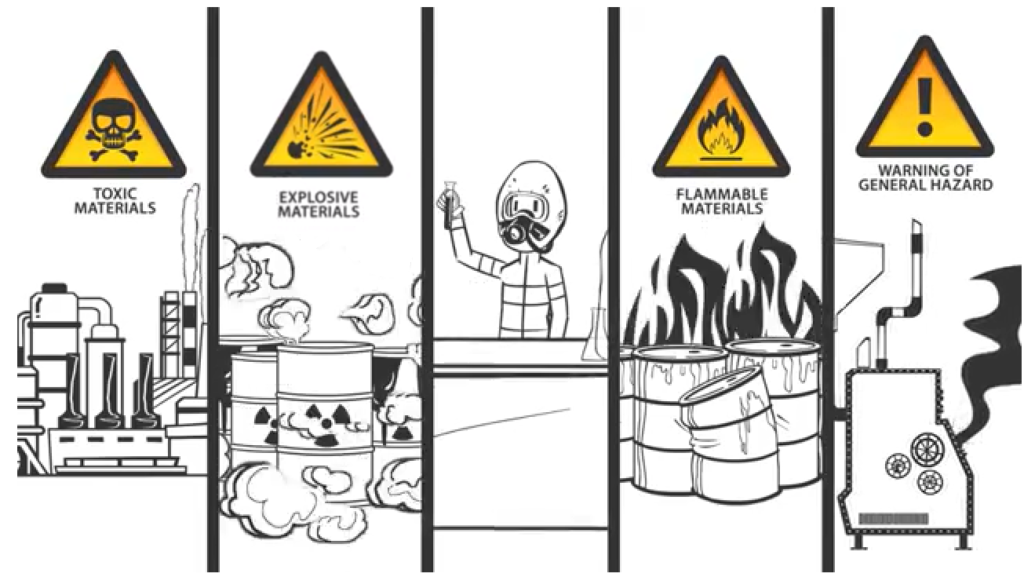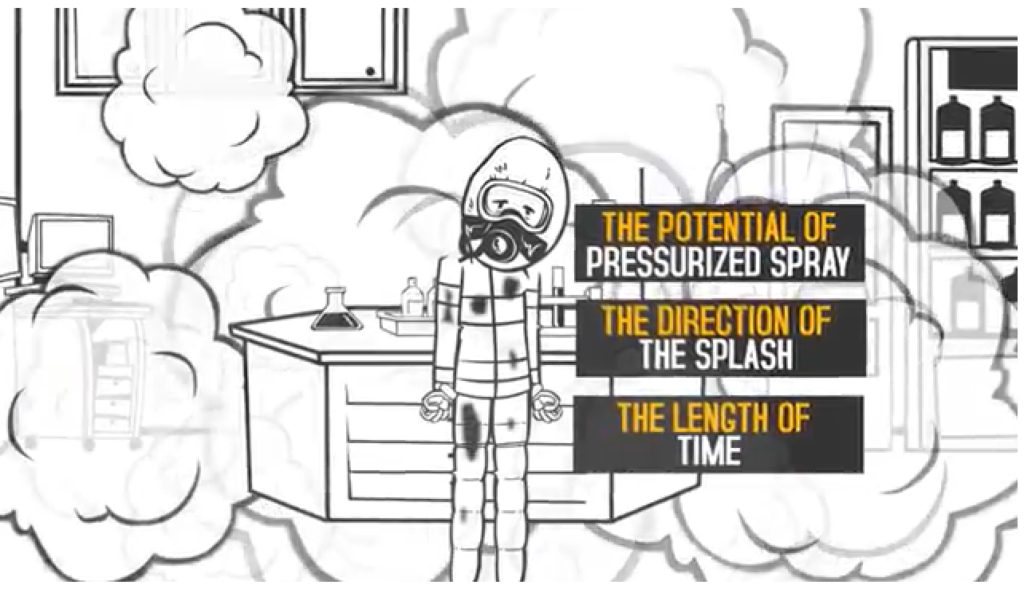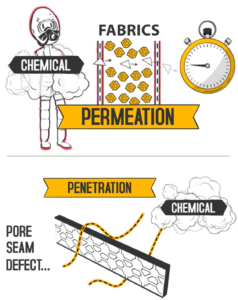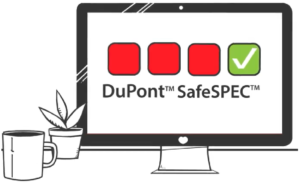Choose the correct chemical suit with these 5 steps

Choosing an appropriate chemical suit for your job can seem like a daunting task. And, with hundreds of options available, it can be hard to know where to start.
You might think suiting up in the highest level of protection is the surest way to keep safe. But, it’s important to remember that higher levels of protection are less breathable. Less breathability can lead to heat stress. Instead of getting yourself in a hot situation, follow our five tips to help you find the perfect suit.
1. Conduct a chemical hazard assessment
You must conduct a chemical hazard assessment of your workplace when choosing a chemical suit.
Take inventory of the chemical products workers interact with while on the job to understand what level of protection you need for the chemical suits. The best way to do this is by using a Safety Data Sheet (SDS).
SDS forms include important details such as hazard identification, first aid treatment, PPE requirements and more.
Have lots of SDS sheets? Check out SafeStation, which stores and automatically updates all your documents.

2. Determine your personal exposures
How often does your staff interact with the identified chemicals? Your hazards assessment should take into account exposure to each chemical product.
You'll also want to consider the following factors when deciding which chemical suit will offer the best protection, including the:
- potential of pressurized spray
- direction of the splash, and
- length of time you’d be exposed.

3. Choose the fabric
It’s important to consider the different types of fabrics including brands like Tyvek® to Tychem®.
Not every material type will be a good fit for your work environment.
Permeation testing measures the amount of chemical product absorbed or diffused through the actual suit material. This test assesses how well the chemical suit material can keep chemical molecules from passing through the solid suit material itself.
Penetration testing measures how much chemical product is inside the suit material. Essentially, this test measures how much chemical passes through a pore, stitch, or other openings/passageways in the suit fabric.
Permeation is the more common and rigorous test. It gives a better indication of how long the suit material will last, so we recommend using this test data to make your decision whenever possible.

The four levels of chemical protective clothing
There are four categories of personal protection equipment (PPE) based on the degree of protection offered.
Level A chemical protective clothing:
Choose level A protection when you need the highest level of respiratory, skin, eye and mucous membrane protection.
Typical Level A ensemble includes:
- SCBA: A NIOSH-approved positive pressure (pressure-demand) self-contained breathing apparatus (SCBA), or positive-pressure supplied-air respirator with escape SCBA.
- Chemical Suit: a fully encapsulating chemical protective suit.
- Gloves: Chemical-resistant gloves worn inside and outside of the suit.
- Boots: Chemical-resistant boots with steel toe and shank (depending on suit boot construction, you may wear the boots over or under the suit boot).
Level B chemical protective clothing:
Choose level B protection when you need the highest level of respiratory protection but a lesser level of skin and eye protection.
Level B protection is the minimum recommended level on initial site entry. Once the hazard is identified and defined by further monitoring, sampling and other reliable analysis methods are complete; then workers must use equipment corresponding to those findings.
Typical Level B ensemble includes:
- SCBA: A NIOSH-approved positive pressure (pressure-demand) self-contained breathing apparatus (SCBA), or positive-pressure supplied-air respirator with escape SCBA.
- Chemical-Resistant Clothing: Includes overalls, long-sleeved jacket, coveralls, hooded two-piece chemical splash suit and disposable chemical resistant coveralls.
- Gloves: Chemical-resistant gloves worn inside and outside of the suit.
- Boots: Chemical-resistant boots with steel toe and shank.
Level C chemical protective clothing:
Choose level C protection when the type of airborne substance is known, concentration measured, criteria for using air-purifying respirators met, and skin and eye exposure is unlikely. Someone must perform periodic air monitoring during these operations.
Typical Level C ensemble includes:
- Respirator: Full-face or half-mask NIOSH-approved air-purifying respirator.
- Chemical-Resistant Clothing: One-piece coverall, hooded two-piece chemical splash suit, chemical-resistant hood and apron, and disposable chemical-resistant coveralls.
- Gloves: Chemical-resistant gloves worn inside and outside of the suit.
- Boots: Chemical-resistant boots with steel toe and shank.
Level D chemical protective clothing:
Choose level D protection for nuisance contamination and requires only coveralls and safety shoes/boots. Base other PPE use, such as gloves or eye protection, on the situation.
Workers should not wear level D PPE on any site where respiratory or skin hazards exist. Along with keeping potential contaminants out, level D chemical protection can also keep possible contamination in, such as forensic investigators examining a crime scene.
4. Consider the seams
Choosing the right type of seam for a chemical suit involves identifying the chemical being used. Are the chemicals solids, liquids or gases?
Particulate chemicals: Choose a serge or stitched seam. These seams are constructed using a needle and thread. However, if you’re dealing with liquid or microscopic chemicals, the tiny holes left behind from the stitching can allow chemical liquids to enter the suit.
Liquid chemicals: Choose a bound seam. This type of stitching includes an additional layer of fabric that is stitched over the seam to increase the holdout of solids and liquids.
Liquid or pressurized spray chemicals: Choose a heat-sealed or ultrasonically welded seam. This method is completely liquid proof and allows suits to become air-tight as the holes from any stitches are covered up with tape. The suits can withstand pressurized spray from entering the suits through the seams. Premium chemical suits will also add another layer of this sealed tape to the inside of the seams allowing for even more protection.

5. Use DuPont SafeSpec to find the suit that’s the right for you
Manufacturers like DuPont perform testing with different chemical products and fabrics to create an extensive database to help you choose the right chemical suit.
The DuPont SafeSpec program is a great way to determine which chemical fabrics are best for your unique work environment.

Place an order for chemical suits:
All the DuPont chemical suits are available through Levitt-Safety, you can order online or contact us today.